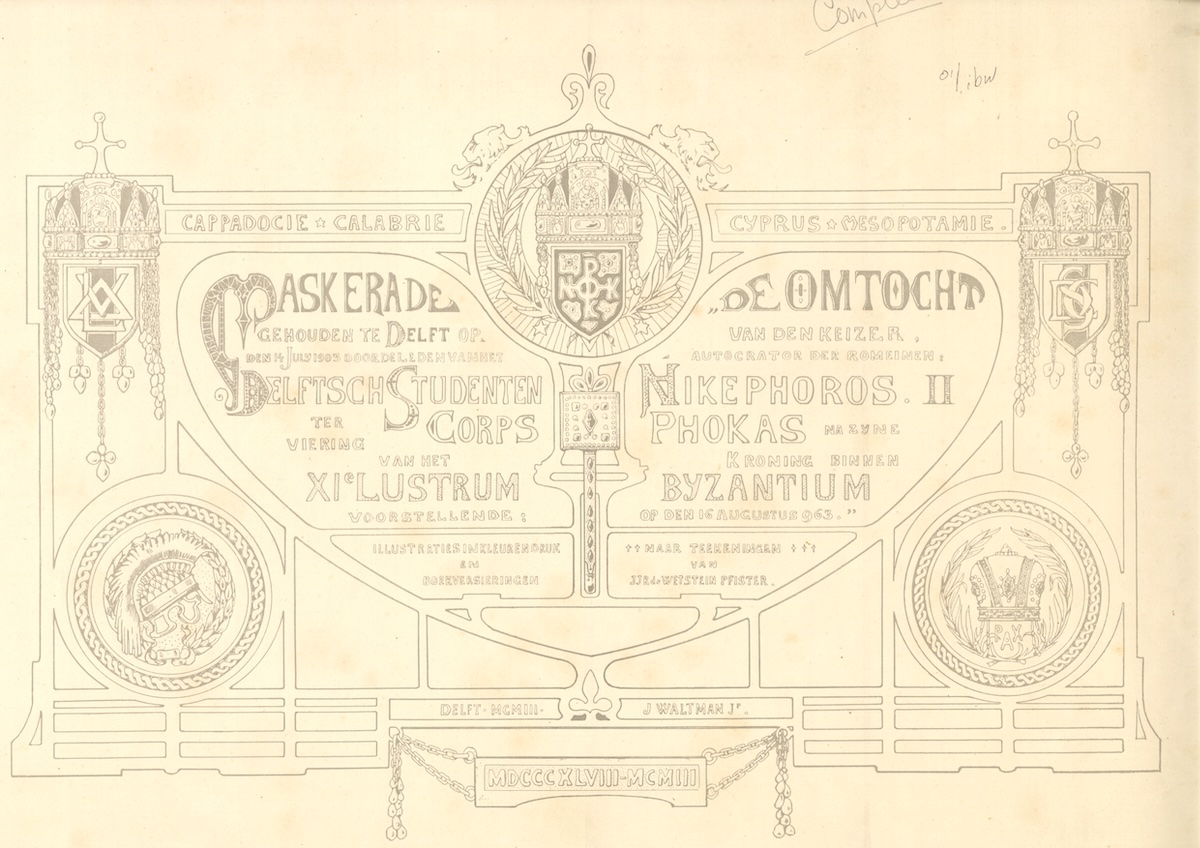Epic Party: Costume, culture and controversy
17 October 2024 09:00 till 17 January 2025 18:00 - Location: TU Delft Library, Treasury | Add to my calendar
The Delft student masquerade of 1903
What would an epic Delft student party look like more than120 years ago? Imagine the city illuminated with torches and fire pits, live music playing, students in elaborate costumes parading through the streets, some on horseback, heading to parties in lavishly decorated halls. Thousands of visitors coming to witness the spectacle.
Student masquerades
In the nineteenth century, Delft students organised masquerades every five years as part of lustrum celebrations. These colourful parades attracted thousands of visitors and were an important part of the celebrations of the Royal Academy, the Delft Student Corps and its relationship with the city of Delft.
Reliving Byzantine opulence
The 1903 masquerade was based on the Imperial Ascent of Nikephoros II Phocas in 963. This spectacle was more than a theatrical performance, it was a large-scale re-enactment of Byzantine opulence with impressive costumes, sets and musical accompaniment. The masquerade was a stage, a symbol that demonstrated the students' grandeur and cultural superiority, as well as its abilities and value to the city of Delft.
The city full of light, music and costume
The masquerade consisted of two parades through Delft, with the city being illuminated at night with torches and braziers. Between the parades, visitors could enter the festival grounds to admire costumed characters and music for a fee. The collaboration with artists contributed to an unprecedented focus on authenticity and historical accuracy. Costumes were made of luxurious materials, such as silk from Smyrna and precious stones from Bohemia and Paris. Everything from the decorations of banquet halls to the music was carefully designed to enhance the historical illusion.
An end to the tradition
Although the masquerades were initially intended to show students in a more positive light, the event increasingly became an exclusive elite celebration, leading to growing criticism. Changing social attitudes towards this lavish spectacle combined with the outbreak of World War I marked the definitive end of traditional student masquerades.
For extra information about the exhibition, visit: https://erfgoed.tudelft.nl/en/publications/epic-party
Drawings by Paul Tetar van Elven, compiled in the ‘Historisch overzicht van de maskerade voorstellende: de ommetocht van Nikephoros II Phocas binnen Byzanthium ... in 963’, by members of the Delft Student Corps, Waltman 1903. TU Delft Library, Trésor Collection, oclc 69024098
The original drawings of this masquerade are part of the Trésor Collection - one of TU Delft Library's special collections - and includes rare and historical books, maps and manuscripts.
By appointment, the collection can be viewed in the Trésor reading room.
Organised by: Team Academic Heritage, History & Art
For questions, please contact Library@tudelft.nl.


